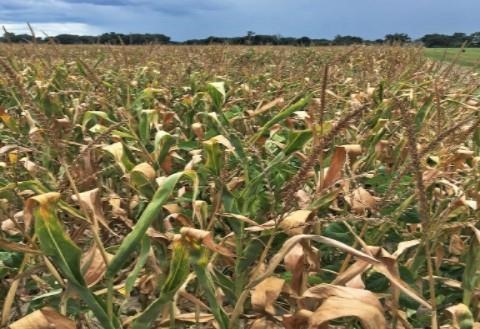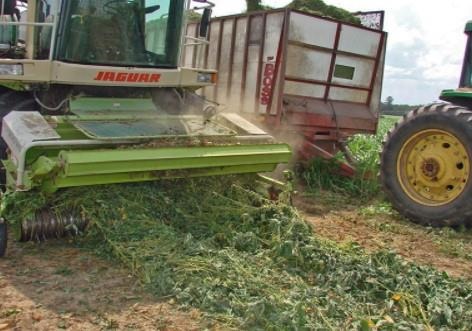By Kacey Aukema
Forages harvested as silage or baleage are preserved through the ensiling process that creates low-oxygen and acidic conditions to prevent undesirable microbial growth. Facilitating the optimum conditions for ensiling from harvest to feedout can help to better conserve summer forages and minimize waste and spoilage.
Harvest Timing & Moisture
Harvesting and storing at the proper maturity and moisture content is critical for a well preserved silage crop. To promote optimum conditions for ensiling, chopped silages like corn and sorghums are best harvested at or close to 65% moisture. “Real world” fieldwork windows with potential weather and equipment delays may not permit hitting that target exactly. However, it’s a good target to shoot for. Silage cut too early/wet will typically yield less, contain less grain, suffer from greater liquid seepage losses, and will not preserve as well. Overly dry/mature silage has reduced forage quality due to increased fiber in leaves and stems, and can be more challenging to pack leading to preservation issues as well.
In large acreage scenarios where maturity will likely vary throughout the field, sample and test moisture in several places across the field to get a better idea of the overall moisture level. Starting harvest at higher moistures (high 60s%) may also be useful in cases of large fields that may take multiple days to harvest, so resulting “average” moisture is closer to the 65% target.
In the case of baleage, the optimum moisture is achieved by wilting after cutting. Summer annual forage grasses harvested as baleage (millet, sorghum, sudangrass, and sorghum x sudan hybrids, etc.) should be cut at the boot to early heading stage and baled and wrapped at 55-45% moisture after wilting. Similarly, perennial forage grasses (bermudagrass, limpograss, etc.) can be wilted and baled as baleage.

Over mature corn will have lower forage quality and have lower moisture than optimum for making silage.
Use of Inoculants
Silage inoculants are additives with strains of bacteria that ferment carbohydrates into lactic acid and other acids to acidify and preserve the forage from degradation. They can contribute to creating better conditions for preserving forages well, but will not magically improve the quality of forages to be better than they were when they were packed in a silo or wrapped in a bale. Legume forages and grasses that are naturally lower in sugars will take longer to ferment, so they especially benefit from the use of inoculants.
Silage inoculants are live bacterial cultures and as such can only do their job if they arrive alive on the forage crop they are intended to help preserve. Improper storage (leaving packages of inoculant inside a vehicle on a hot day) or using chlorinated water in an inoculant tank will kill the bacteria and render the inoculant and the money spent on them useless.

Legume forages preserved as silage benefit from the use of silage inoculants.
Packing, Storage, & Feedout
Tightly packing silage in the silo or making tight, dense baleage bales minimizes excess air/oxygen that can slow the silage preservation process. A well-sealed silo or well-wrapped bale prevents forage-spoiling microbes from growing on the forage. Timely patching of holes and tears in plastic covering silage or wrapped baleage can help to maintain the low oxygen conditions and prevent spoilage as well. For this same reason, it can be useful to recover or reseal silage or wrapped bales once opened, if those forages aren’t being fed out at frequent, regular intervals.
Overall, taking a little extra care to harvest at the proper moisture and maturity, use inoculants correctly, and ensure proper packing/sealing will promote the right environment to preserved forages well. Better preserved forages maintain their nutritional quality and value for their intended feeding use, and make the most of the resources invested into silage or baleage.
Source : ufl.edu